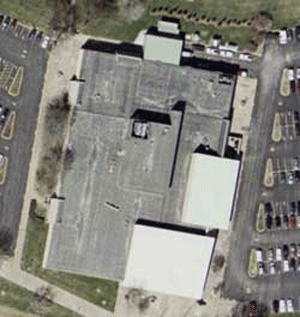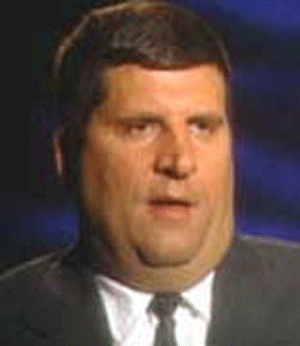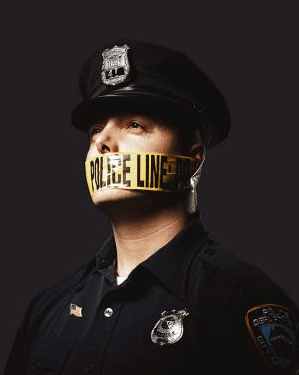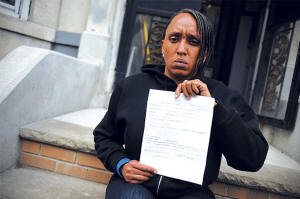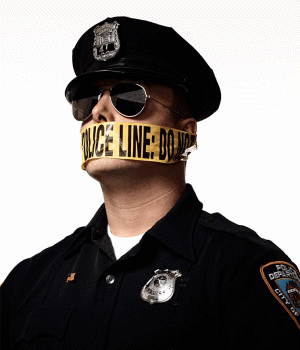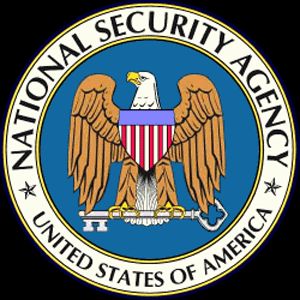by History Commons
3/28/16
NOTICE: THIS WORK MAY BE PROTECTED BY COPYRIGHT
YOU ARE REQUIRED TO READ THE COPYRIGHT NOTICE AT THIS LINK BEFORE YOU READ THE FOLLOWING WORK, THAT IS AVAILABLE SOLELY FOR PRIVATE STUDY, SCHOLARSHIP OR RESEARCH PURSUANT TO 17 U.S.C. SECTION 107 AND 108. IN THE EVENT THAT THE LIBRARY DETERMINES THAT UNLAWFUL COPYING OF THIS WORK HAS OCCURRED, THE LIBRARY HAS THE RIGHT TO BLOCK THE I.P. ADDRESS AT WHICH THE UNLAWFUL COPYING APPEARED TO HAVE OCCURRED. THANK YOU FOR RESPECTING THE RIGHTS OF COPYRIGHT OWNERS.
May 1969: FBI Wiretaps Nixon Aides, Reporters at Kissinger’s Behest
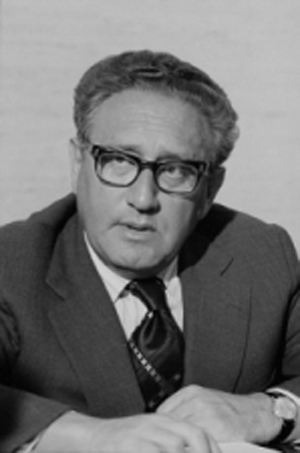
Henry Kissinger. [Source: Library of Congress]
Secretary of State Henry Kissinger, determined to prove to President Nixon that news stories about the secret Cambodian bombings are not being leaked to the press by liberals in the National Security Council offices, urges FBI director J. Edgar Hoover to wiretap several of Nixon’s top aides, as well as a selection of reporters. Kissinger will later deny making the request. [WERTH, 2006, PP. 169] In March 1973, W. Mark Felt, the deputy director of the FBI and Washington Post reporter Bob Woodward’s famous “Deep Throat” background source, will confirm the wiretappings, saying: “In 1969, the first targets of aggressive wiretapping were the reporters and those in the administration who were suspected of disloyalty. Then the emphasis was shifted to the radical political opposition during the [Vietnam] antiwar protests. When it got near election time [1972], it was only natural to tap the Democrats (see Late June-July 1971 and May 27-28, 1972). The arrests in the Watergate (see 2:30 a.m.June 17, 1972) sent everybody off the edge because the break-in could uncover the whole program.” [BERNSTEIN AND WOODWARD, 1974, PP. 271] Felt will tell Woodward that two of the reporters placed under electronic surveillance are Neil Sheehan and Hedrick Smith. Pentagon Papers leaker Daniel Ellsberg will leak the Defense Department documents to Sheehan (see March 1971). Eventually, future FBI director William Ruckelshaus will reveal that at least 17 wiretaps are ordered between 1969 and 1971. The logs of those wiretaps are stored in a safe in White House aide John Ehrlichman’s office. In all, 13 government officials and four reporters are monitored. [BERNSTEIN AND WOODWARD, 1974, PP. 313] The FBI will send Kissinger 37 letters reporting on the results of the surveillance between May 16, 1969 and May 11, 1970. When the surveillance is revealed to the Senate Watergate Committee, it will be shown that among those monitored are Nixon speechwriter and later New York Times columnist William Safire; Anthony Lake, a top Kissinger aide who will later resign over the secret bombings of Cambodia; and the military assistant to Secretary of Defense Melvin Laird, whom Kissinger regards as a political enemy. [WOODWARD, 2005, PP. 21-22]
Late June-July 1971: Nixon Authorizes ‘Plumbers,’ Orders Media Leaks to Smear Ellsberg
President Nixon authorizes the creation of a “special investigations unit,” later nicknamed the “Plumbers,” to root out and seal media leaks. The first target is Daniel Ellsberg, who leaked the Pentagon Papers to the press (see June 13, 1971); the team will burglarize the office of Ellsberg’s psychiatrist, Dr. Lewis Fielding, in hopes of securing information that the White House can use to smear Ellsberg’s character and undermine his credibility (see September 9, 1971). Nixon aide John Ehrlichman, who supervises the “Plumbers,” will later say that the Ellsberg burglary is “the seminal Watergate episode.” Author Barry Werth will later write, “[L]ike all original sins, it held the complete DNA of subsequent misdeeds.” During the upcoming court battle over the documents, Nixon tells his aide Charles Colson: “We’ve got a countergovernment here and we’ve got to fight it. I don’t give a damn how it’s done. Do whatever has to be done to stop those leaks.… I don’t want to be told why it can’t be done.” Whatever damaging information the “Plumbers” can find on Ellsberg will be itself leaked to the press, Nixon says. “Don’t worry about his trial [referring to Ellsberg’s arrest on conspiracy and espionage charges (see June 28, 1971) ]. Just get everything out. Try him in the press… leak it out.” [WERTH, 2006, PP. 84-87] As he is wont to do, Nixon refers to his own success in convicting suspected Communist spy Alger Hiss in 1950. “We won the Hiss case in the papers,” he says. “We did. I had to leak stuff all over the place. Because the Justice Department would not prosecute it.… It was won in the papers…. I leaked out the papers. I leaked everything.… I leaked out the testimony. I had Hiss convicted before he ever got to the grand jury.” [KUTLER, 1997, PP. 10; REEVES, 2001, PP. 337-338] In July 1973, FBI deputy director W. Mark Felt, the notorious “Deep Throat” (see May 31, 2005) will tell reporter Bob Woodward that Nixon created the Plumbers because the FBI would not do his bidding in regards to Ellsberg. Had the FBI agreed to investigate Ellsberg to the extent Nixon wanted, he would not have created the “Plumbers.” “The problem was that we [the FBI] wouldn’t burglarize” (see June 30-July 1, 1971), Felt will say. Ehrlichman will later testify, “Those fellows were going out as substitutes for the FBI.” [WOODWARD, 2005, PP. 107]
August 5, 1971: ’Plumbers’ Probe Ellsberg, Decide to Break into Psychiatrist’s Office
Nixon aide John Ehrlichman passes on the president’s recommendations to the heads of the “Plumbers,” Egil Krogh and David Young (see July 20, 1971), regarding “Pentagon Papers” leaker Daniel Ellsberg (see Late June-July 1971): “Tell Keogh he should do whatever he considers necessary to get to the bottom of this matter—to learn what Ellsberg’s motives and potential further harmful action might be.” Within days, Keogh and Young will give Ehrlichman a memo detailing the results of investigations into Ellsberg and a dozen of Ellsberg’s friends, family members, and colleagues. The memo also says that the CIA’s psychological profile of Ellsberg is “superficial.” Keogh and Young recommend a covert operation be undertaken to examine the medical files held by Ellsberg’s psychiatrist, Dr. Lewis Fielding (see September 9, 1971). Ehrlichman approves the idea, with the caveat, “If done under your assurance that it is not traceable.” They also suggest that MI5 (British intelligence) wiretaps on Soviet KGB personnel in England in 1952 and 1953, the years when Ellsberg attended Cambridge University, be examined for any mention of Ellsberg. Ehrlichman approves this also. [REEVES, 2001, PP. 352-353]
September 8, 1971: Ehrlichman Reports ‘Plumbers’ Operations to Nixon
Nixon aide John Ehrlichman gives a progress report on the activities of the “Plumbers” to the president. “Plumbers” head Egil Krogh has “been spending most of his time on the Ellsberg declassification,” Ehrlichman reports, referring to the probe into “Pentagon Papers” leaker Daniel Ellsberg (see Late June-July 1971). “We had one little operation. It’s been aborted out in Los Angeles, which, I think, is better that you don’t know about. But we’ve got some dirty tricks underway. It may pay off.” The “little” Los Angeles project—designated “Hunt/Liddy Special Project No.1” in Ehrlichman’s notes—is the burglary of the offices of Ellsberg’s psychiatrist, Dr. Lewis Fielding (see September 9, 1971). The “aborted” mission refers to Ehrlichman’s refusal to countenance a second break-in, this time of Fielding’s home. [REEVES, 2001, PP. 368-369]
September 9, 1971: ’Plumbers’ Burglarize Psychiatrist Office
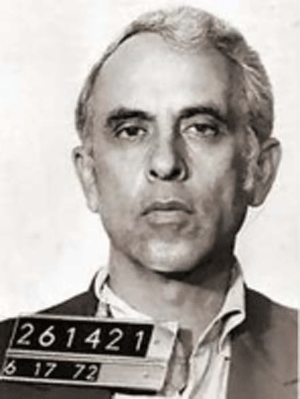
Eugenio Martinez. [Source: public domain]
President Nixon’s “Plumbers” unit, tasked to plug media leaks from administration officials and outsiders to the media, burglarizes the Los Angeles office of psychiatrist Lewis Fielding to find damaging information on Daniel Ellsberg, the former defense analyst and patient of Fielding who leaked the “Pentagon Papers” to the media. [GERALD R. FORD LIBRARY AND MUSEUM, 7/3/2007] Ellsberg is a former Marine captain in Vietnam and protege of Henry Kissinger who had a change of heart over the war; he then leaked a secret set of Pentagon documents to the New York Times detailing how the Kennedy and Johnson administrations had secretly escalated the war in Vietnam (see June 13, 1971).
Watergate Connection -- One of the burglars is Eugenio Martinez, who later is arrested as one of the five Watergate burglars (see 2:30 a.m.June 17, 1972). Martinez and two others—Felipe de Diego and the mission leader, E. Howard Hunt, who will supervise the Watergate burglary—are all old “CIA hands” heavily involved in anti-Castro activities. Martinez is still active in the CIA, as is Hunt, whom he often refers to by his old CIA code name of “Eduardo.” Another Watergate burglar, CIA agent Bernard Barker, is also involved in the Ellsberg burglary.
Martinez: Burglary a Near-Disaster -- Hunt tells Martinez and Diego that they are to burglarize the offices of a “traitor” who is spying for the Soviet Union, and that the mission was ordered by the White House, where Hunt is now an aide. Barker tells the Cubans, “We have to find some papers of a great traitor to the United States, who is a son of a b_tch .” The men will become a unit outside the normal law enforcement and intelligence channels, operating within but not part of the CIA, FBI, and “all the agencies,” Martinez will later recall. They buy photographic equipment at Sears, and Hunt and Diego use disguises—wigs, fake glasses, false identification, and voice-altering devices. “Barker recognized the name on Hunt’s false identification—Edward J. Hamilton—as the same cover name Eduardo had used during the Bay of Pigs,” Martinez will recall. The planning, Martinez will recall, is far looser and less meticulous than “anything I was used to in the [CIA].” A disguised Hunt and Diego, masquerading as delivery men, deliver the photographic equipment to the office; later that night, they and Martinez break in and rifle the office. Martinez will write that Hunt and de Diego looked “kind of queerish” in their disguises, with their “Peter Lorre-type glasses, and the funny Dita Beard wigs” (see February 22, 1972). Before the break-in, Barker, who does not enter, whispers to Martinez, “Hey, remember this name—Ellsberg.” Martinez does not recognize the name. [HARPER'S, 10/1974; REEVES, 2001, PP. 369]
Comedy of Errors -- The burglars wait for hours until the cleaning lady leaves for the night, and find the door to the building locked. At that point, a fifth man, “George,” whom Martinez learns is G. Gordon Liddy, another of the Watergate burglars also involved in the Ellsberg planning, appears and tells them to break in through a window. [HARPER'S, 10/1974] Three burglars—Bernard Barker, Felipe de Diego, and Eugenio Martinez—perform the actual break-in, while Hunt and Liddy act as lookouts. [REEVES, 2001, PP. 369] The burglary is quickly turning into a comedy of errors, Martinez will recall. “This was nothing new. It’s what the Company did in the Bay of Pigs when they gave us old ships, old planes, old weapons. They explained that if you were caught in one of those operations with commercial weapons that you could buy anywhere, you could be said to be on your own. They teach you that they are going to disavow you. The Company teaches you to accept those things as the efficient way to work. And we were grateful. Otherwise we wouldn’t have had any help at all. In this operation it seemed obvious—they didn’t want it to be traced back to the White House. Eduardo told us that if we were caught, we should say we were addicts looking for drugs.” Martinez finds nothing concerning Ellsberg in the office except for Fielding’s telephone book, which Martinez photographs. Before leaving, Martinez spills some pills from Fielding’s briefcase—“vitamin C, I think”—over the floor to make it seem as if the burglars had broken in looking for drugs. As they leave the office, Martinez spots a police car trailing them, but they are not stopped. “I thought to myself that the police car was protecting us. That is the feeling you have when you are doing operations for the government. You think that every step has been taken to protect you.”
Failure; Training for Bigger Mission? -- Martinez feels that the burglary is a failure, but Hunt insists that they celebrate anyway. Martinez tells Diego that the break-in must either be a training exercise for a more important mission to come, or it was a cover operation for something else. “I thought to myself that maybe these people already had the papers of Ellsberg. Maybe Dr. Fielding had given them out and for ethical reasons he needed to be covered. It seemed that these people already had what we were looking for because no one invites you to have champagne and is happy when you fail,” he will write. Martinez’s CIA supervisor is strangely uninterested in the incident. “I was certain then that the Company knew about his activities,” Martinez will write. “But once again my CO did not pursue the subject.” [HARPER'S, 10/1974] Hunt telephones Plumbers supervisor Egil Krogh at 4 a.m. to report that the burglary was a success but they found no files on Ellsberg. [REEVES, 2001, PP. 369]
Early January, 1973: Barker, Other Burglars Remaining Silent to Keep Ellsberg Burglary Secret
While awaiting trial, Watergate burglar James McCord (see June 19, 1972) tells his fellow burglars that he is going to get his own lawyer. “I am going to get F. Lee Bailey. He is a big attorney,” McCord tells Bernard Barker. McCord recommends that Barker and the other Cubans—Virgilio Gonzales, Eugenio Martinez, and Frank Sturgis—get their own lawyers, too. Barker meets with lawyer Henry Rothblatt, who assures Barker that he will represent all the Cubans for free. “He had [successfully] defended the Green Berets in their big case” (see September 29, 1969), Barker will write in 1974, and this case is, according to Rothblatt, very similar. Protected by the attorney-client relationship, Barker tells Rothblatt about both the Watergate and Ellsberg burglaries (see August 5, 1971). Barker will write, “So he knew we couldn’t use the truth as our defense in the Watergate case, because we could not reveal our recruitment for the Ellsberg case.” [HARPER'S, 10/1974]
March 21, 1973: White House Lawyer Dean: There Is ‘A Cancer on the Presidency’
White House counsel John Dean warns President Nixon of a “cancer on the presidency.” When this phrase enters the public dialogue, it is popularly misremembered as Dean warning Nixon about the ill effects of the Watergate conspiracy on the Nixon presidency. Instead, Dean is warning Nixon about the deleterious effects of the blackmail efforts being carried out against the White House by the convicted Watergate burglars (see June 20-21, 1972). In a conversation secretly taped by Nixon, Dean says, “We have a cancer within, close to the Presidency, that is growing. Basically it is because we are being blackmailed.” [REEVES, 2001, PP. 577-578; GERALD R. FORD LIBRARY AND MUSEUM, 7/3/2007; SPARTACUS SCHOOLNET, 8/2007]
Cancer Should 'Be Removed Immediately' -- In later testimony to the Senate Watergate Investigative Committee (see June 25-29, 1973), Dean states his words somewhat differently: “I began by telling the president that there was a cancer growing on the presidency and that if the cancer was not removed, that the president himself would be killed by it. I also told him that it was important that this cancer be removed immediately because it was growing more deadly every day.” Dean then tells Nixon virtually the entire story of the Watergate conspiracy, noting his discussions with other conspirators about the prospective wiretapping of the Democrats—particularly Watergate burglar G. Gordon Liddy and campaign officials John Mitchell and Jeb Magruder—and tells Nixon that he had reported the plans to Nixon’s top aide, H. R. Haldeman. He had participated in paying off the burglars to remain silent, and had coached Magruder to perjure himself before the Watergat grand jury (see April 14-18, 1973). Dean will testify: “I concluded by saying that it is going to take continued perjury and continued support of these individuals to perpetuate the cover-up and that I did not believe that it was possible to so continue it. Rather, all those involved must stand up and account for themselves and the president himself must get out in front.” But, Dean will testify, Nixon refuses to countenance Dean’s advice, and instead sets up a meeting with Dean, Haldeman, Mitchell, and his other top aide, John Ehrlichman. Nixon hopes that Mitchell will agree to take the blame for the Watergate wiretapping, and thusly quell the public uproar (Mitchell will refuse). Nixon, Haldeman, Ehrlichman, and Dean meet a second time that afternoon, a meeting which Dean will later describe as another “tremendous disappointment.” He will testify, “It was quite clear that the cover-up as far as the White House was concerned was going to continue.” He will testify that he believes both Haldeman and Ehrlichman, and himself, are indictable for obstruction of justice, and that “it was time that everybody start thinking about telling the truth.” However, both aides “were very unhappy with my comments.” [TIME, 7/9/1973] Dean tells Nixon that to save his presidency, he and his closest aides Haldeman and Ehrlichman are going to have to testify and most likely go to jail. [BERNSTEIN AND WOODWARD, 1974, PP. 304]
Blackmail Payoffs -- Between the blackmail and the almost-certainty that White House officials are going to start perjuring themselves, Dean concludes that the problem is critical. Convicted burglar E. Howard Hunt wants another $72,000 for what he is calling personal expenses and $50,000 more for attorneys’ fees. Hunt directly threatened aides John Ehrlichman and Egil Krogh (see July 20, 1971) with his testimony, saying that, Dean reports, “I have done enough seamy things for he and Krogh that they’ll never survive it.” Hunt is threatening to reveal the story behind the Ellsberg break-in (see September 9, 1971) and, in Dean’s words, “other things. I don’t know the full extent of it.” Nixon asks, “How much money do you need?” Dean replies, “I would say these people are going to cost a million dollars over the next two years.” Nixon muses, “You could get a million dollars. You could get it in cash. I know where it could be gotten. I mean it’s not easy but it could be done.” The money can be raised, Nixon says, but the idea of any presidential pardons for anyone is out. Nixon learns from his secretary, Rose Mary Woods, that their secret campaign fund still has over $100,000. That evening, Hunt is given $75,000 in cash. [REEVES, 2001, PP. 577-578; GERALD R. FORD LIBRARY AND MUSEUM, 7/3/2007; SPARTACUS SCHOOLNET, 8/2007] Hunt will eventually receive $120,000, almost the exact amount he demands. [RESTON, 2007, PP. 35]
May 11, 1973: All Charges Against Pentagon Papers Leaker Dropped; Judge Blasts Governmental Misconduct
US District Court Judge W. M. Byrne, Jr dismisses all charges against “Pentagon Papers” leaker Daniel Ellsberg (see March 1971) and Ellsberg’s co-defendant, Anthony Russo. [NEW YORK TIMES, 5/11/1973] Byrne was shocked to learn that Watergate burglars G. Gordon Liddy and E. Howard Hunt had supervised the burglary of the office of Ellsberg’s psychiatrist (see September 9, 1971). The source of the information was probably White House counsel John Dean. [BERNSTEIN AND WOODWARD, 1974, PP. 307] Initially, government prosecutors had insisted that Ellsberg had never been wiretapped, but FBI director William Ruckelshaus found that Ellsberg had indeed been recorded, during a conversation with former Kissinger aide Morton Halperin, who had been wiretapped (see June 19, 1972). Ruckelshaus tells the court that Halperin had been monitored for 21 months. It is the first public acknowledgement that the Nixon administration had used wiretaps against its political enemies (see June 27, 1973). Additionally, the government had broken the law when it failed to disclose the wiretap to Ellsberg’s defense lawyers. [BERNSTEIN AND WOODWARD, 1974, PP. 313] Byrne cites “improper government conduct shielded so long from public view” and an array of governmental misconduct in dismissing the charges. “The conduct of the government has placed the case in such a posture that it precludes the fair, dispassionate resolution of these issues by a jury,” Byrne rules. Ellsberg and Russo were charged with theft, conspiracy, and fraud in the case. The government’s actions in attempting to prosecute Ellsberg and Russo “offended a sense of justice,” he says. One of the governmental actions that Byrne decries was the wiretapping of Ellsberg’s telephone conversations by the FBI in 1969 and 1970, and the subsequent destruction of the tapes and surveillance logs of those conversations. Byrne is also disturbed by the burglary of the offices of Ellsberg’s psychiatrist by government agents (see June 30-July 1, 1971 and September 9, 1971), and the apparent involvement of the FBI and the CIA in the prosecution of the case at the “request of the White House.” Referring to the burglary, Byrne says, “We may have been given only a glimpse of what this special unit did.” After the trial, Ellsberg is asked if he would disclose the Pentagon documents again, and he replies, “I would do it tomorrow, if I could do it.” [NEW YORK TIMES, 5/11/1973]
June 3, 1973: Washington Post Says Dean Discussed Cover-Up with Nixon 35 Times, Approved of Payoffs to Watergate Conspirators
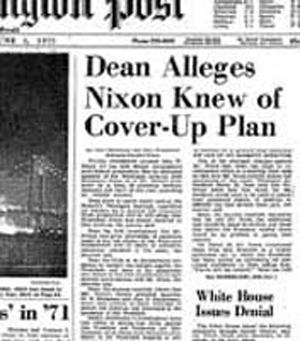
Washington Post headline from Dean story. [Source: Washington Post]
Former White House counsel John Dean has told Watergate investigators that he discussed the Watergate cover-up with President Nixon at least 35 times [GERALD R. FORD LIBRARY AND MUSEUM, 7/3/2007] between January and April of 1973, according to sources quoted by the Washington Post. Dean plans on testifying to his assertions in the Senate Watergate hearings (see May 17-18, 1973), whether or not he is granted immunity from prosecution. He will also allege that Nixon himself is deeply involved with the Watergate cover-up. Nixon had prior knowledge of payments used to buy the silence of various Watergate conspirators, and knew of offers of executive clemency for the conspirators issued in his name. Dean has little solid evidence besides his own personal knowledge of events inside the White House.
Haldeman, Ehrlichman, Nixon Central Figures in Cover-Up -- Dean will testify that two of Nixon’s closest aides, H. R. Haldeman and John Ehrlichman (see April 30, 1973), were also present at many of the meetings where the cover-up was discussed in Nixon’s presence. The White House, and Haldeman and Ehrlichman, have tried to portray Dean as the central figure in the Watergate conspiracy, and the Justice Department says there is ample evidence to indict Dean for a number of crimes related to the cover-up. Dean and his supporters paint Dean as a White House loyalist who merely did what he was told, until he began agonizing over the effect Watergate was having on Nixon. Dean alleges that Nixon asked him how much the seven Watergate defendants (see June 17, 1972) would have to be paid to ensure their silence, aside from the $460,000 already paid out; when Dean replied that the cost would be around $1 million, Nixon allegedly replied that such a payoff would be no problem. Dean has told investigators that later Nixon insisted he had been merely “joking” about the payoff. Dean says by that time—March 26—Nixon knew that Dean would be cooperating with the Watergate investigation, and that he believes Nixon was trying to retract the statement for his own legal well-being.
Pressured to Confess -- Dean has also testified that Nixon tried to force him to sign a letter of resignation that would have amounted to a confession that Dean had directed the Watergate cover-up without the knowledge of Nixon, Haldeman, or Ehrlichman. When Dean refused to sign, he says, Nixon warned him “in the strongest terms” never to reveal the Nixon administration’s covert activities and plans. Dean also says that Nixon personally directed the White House’s efforts to counterattack the press over Watergate (see October 16-November, 1972). Until January 1, Dean has told investigators, he usually reported to Haldeman and Ehrlichman regarding his Watergate-related activities, but after that date Nixon began taking more of an active role in dealing with Dean, and gave Dean direct orders on handling the cover-up.
Reliable Witness -- Dean has so far met eight times with the Watergate prosecutors, and twice with the chief legal counsel of the Senate Watergate committee, Samuel Dash. Dash and the prosecutors find Dean a compelling and believable witness. “[E]verything we have gotten from Dean that we were able to check out has turned out to be accurate,” says one Justice Department source. Dean says he tried without success to obtain records that would support his allegations in his final days in the White House, and believes that many of those records may have been destroyed by now. Dean did manage to remove some secret documents before his firing, documents that prompted Nixon to recently admit to “covert activities” surrounding Watergate. Dean’s information has already led to the revelation of the burglary of the office of Pentagon Papers leaker Daniel Ellsberg (see September 9, 1971), and to the resignation of FBI director L. Patrick Gray after Gray was found to have destroyed evidence taken from the safe of Watergate burglar E. Howard Hunt (see June 28, 1972).[WASHINGTON POST, 6/3/1973]
June 8-9, 1973: Colson Planned to Firebomb Brookings Institution, Post Reports
Washington Post reporter Carl Bernstein learns of White House aide Charles Colson’s plan to burglarize the Brookings Institution (see June 30-July 1, 1971 and June 1974), and, alarmingly, of Colson’s plans to actually firebomb the building. An associate of former White House counsel John Dean tells Bernstein that Colson did not want to just burglarize the Institute: “Chuck Colson wanted to rub two sticks together.”
Urgent Trip to See Nixon -- Colson could not have been serious, Bernstein says, but the associate replies: “Serious enough for [White House aide] John Caulfield to run out of Colson’s office in a panic. He came straight to John Dean, saying he didn’t ever want to talk to that man Colson again because he was crazy. And that John better do something before it was too late. John caught the first courier flight out to San Clemente [President Nixon’s home in California] to see [then-White House aide John] Ehrlichman. That’s how serious it was.” Ehrlichman indeed shut the operation down before it could start, but the associate implies Ehrlichman’s decision may have been based more on the fact that Dean knew about it than over any shock or outrage over the firebombing plan.
Reasoning behind Attack -- Colson wanted to firebomb Brookings because former Kissinger aide Morton Halperin, a Brookings fellow, may have had classified State Department documents at the Institute that the White House wanted back. A fire at the Institute would cover up a burglary of Halperin’s office.
Confirmation from Associate -- Bernstein confirms the story from an associate of Caulfield’s, who clarifies: “Not a fire, a firebombing. That was what Colson thought would do the trick. Caulfield said, ‘This has gone too far’ and [that] he didn’t ever want anything to do with Colson again in his life.” Both Dean and Caulfield told FBI investigators about the plan, Caulfield’s associate says.
Woodward Calls Colson -- When Bernstein’s colleague Bob Woodward calls Colson for a comment on the story, Colson jokes: “There’s no question about that. There is one mistake. It was not the Brookings, but the Washington Post. I told them to hire a wrecking crane and go over and knock down the building and Newsweek also.… I wanted the Washington Post destroyed.” When Woodward tells him the newspaper is printing the story, Colson retorts: “Explicitly, it is bullsh_t. I absolutely made no such statement or suggestion. It is ludicrous.… [T]his one has gone too far.” Colson calls back and says he may have made such a suggestion, but he was not serious. The Post prints the story. [BERNSTEIN AND WOODWARD, 1974, PP. 324-325]
Confirmation by Dean -- In 2006, Dean will write that when he “learned of [Colson’s] insane plan, I flew to California… to plead my case to John Ehrlichman, a titular superior to both Colson and myself. By pointing out, with some outrage, that if anyone died it would involve a capital crime that might be traced back to the White House, I was able to shut down Colson’s scheme.”[DEAN, 2006, PP. XXIII]
June 13, 1973: Investigators Find Memo Tying Ehrlichman to Ellsberg Burglary
Watergate investigators find a memo addressed to John Ehrlichman detailing plans to burglarize the office of Daniel Ellsberg’s psychiatrist (see September 9, 1971). The one-page memo was sent to Ehrlichman by former White House aides David Young and Egil “Bud” Krogh, and was dated before the September 3, 1971 burglary. The memo was given to investigators by Young, who has been granted immunity from prosecution in return for his cooperation. Young, says Justice Department sources, will testify that Ehrlichman saw the memo and approved the burglary operation. Ehrlichman, through his attorney, denies any advance knowledge of the burglary. Young and Krogh directed the day-to-day operations of the so-called “Plumbers,” a group of White House and Nixon campaign operatives charged with stopping media leaks. Krogh has testified in an affidavit that he was given “general authorization to engage in covert activity” to obtain information on Ellsberg by Ehrlichman. Krogh won Senate confirmation as an undersecretary in the Department of Transportation, but has since resigned his post. Young was a member of the National Security Council and a former appointments secretary to National Security Adviser Henry Kissinger; he resigned in April. [WASHINGTON POST, 6/13/1973]
July 24, 1973: Former Nixon Aide John Ehrlichman Testifies before Senate
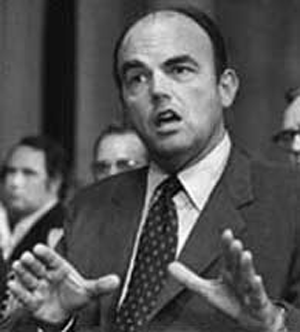
John Ehrlichman testifies before the Senate Watergate Committee.[Source: Associated Press]
Former senior White House aide John Ehrlichman testifies before the Senate Watergate Committee. [CNN, 2/15/1999] He disputes previous testimony by former White House counsel John Dean (see June 3, 1973), and defends both the Ellsberg break-in (see September 9, 1971) and President Nixon’s overall conduct. [FACTS ON FILE, 8/28/2006]
March 7, 1974: Nixon Aides Charged with Ellsberg Break-In
Former White House aides John Ehrlichman, Charles Colson, and G. Gordon Liddy, and three Cuban-Americans, including two of the convicted Watergate burglars (see January 8-11, 1973), Bernard Barker and Eugenio Martinez, are charged with planning and executing the burglary of the offices of Dr. Lewis Fielding, Pentagon Papers leaker Daniel Ellsberg’s psychiatrist (see September 9, 1971). Colson will quickly reach a plea-bargain agreement, promise to cooperate with the prosecution, plead guilty to one count of obstruction of justice, and serve approximately seven months in prison. [BERNSTEIN AND WOODWARD, 1974, PP. 335; BILLY GRAHAM CENTER, 12/8/2004] He will also be disbarred. In the guilty plea agreement, Colson admits to having devised “a scheme to obtain derogatory information about Daniel Ellsberg,” who himself was facing criminal charges relating to the Pentagon Papers leak. Colson wanted to smear Ellsberg’s reputation in the media, in essence having Ellsberg “tried in the newspapers” even though this would have an “adverse effect on his right to a fair trial.” Colson also admits to having written a “scurrilous and libelous memorandum” about one of Ellsberg’s attorneys. He does not admit to actually taking part in the planning of the Fielding burglary. [TIME, 6/17/1974] In 2006, White House counsel John Dean will write that Colson’s promise of cooperation is virtually worthless: “[I]n the end he proved to be utterly useless as a government witness, since the government could not vouch for his honesty.” [DEAN, 2006, PP. XXIII]
March 23, 1974: Liddy Convicted in Ellsberg Break-in
G. Gordon Liddy, one of the “Plumbers,” is convicted of an array of crimes related to the Ellsberg break-in (see September 9, 1971), and is sentenced from six to twenty years in prison. He faces concurrent charges of violating the civil rights of Ellsberg’s psychiatrist, Dr. Lewis Fielding (see March 7, 1974). [O.T. JACOBSON, 7/5/1974 ]
June 1974: Charles Colson Sentenced after Pleading Guilty to Watergate Crimes; Testifies about Nixon Involvement
Former Nixon White House aide Charles Colson, later described by reporter David Plotz as “Richard Nixon’s hard man, the ‘evil genius’ of an evil administration,” is sentenced to jail after pleading guilty (see March 7, 1974) to taking part in the plan to break into Daniel Ellsberg’s psychiatrist’s office (see September 9, 1971) and interfering with Ellsberg’s trial (see June 28, 1971). Colson also, according to Watergate historian Stanley Kutler, tried to hire Teamster thugs to beat up antiwar demonstrators, and plotted to either raid or firebomb the Brookings Institution (see June 8-9, 1973). Colson will serve seven months in jail (see September 3, 1974). [SLATE, 3/10/2000] Colson tells the court: “I shall be cooperating with the prosecutor, but that is not to say that the prosecutor has bargained for my testimony, that there is any quid pro quo: there was not. I reached my own conclusion that I have a duty to tell everything I know about these important issues, and a major reason for my plea was to free me to do so.” Colson’s testimony against Richard Nixon is damning, as he tells the court Nixon had “on numerous occasions urged me to disseminate damaging information about Daniel Ellsberg.” Vice President Ford defends Nixon, saying, “There’s a big difference between telling Chuck Colson to smear Ellsberg and ordering—or allegedly ordering—a break-in.” Colson will later become a born-again Christian evangelist, and found an influential prison ministry. [SLATE, 3/10/2000; WERTH, 2006, PP. 273-274]
July 5, 1974: Justice Department Issues Mixed Report on FBI Investigation of Watergate
The Justice Department’s Office of Planning and Evaluation (OPE) submits a report on the role and actions of the FBI in the Watergate investigations. The report finds that, even with the attempts of former Attorneys General John Mitchell and Richard Kleindienst, White House aides John Dean and Jeb Magruder, and others to “mislead and thwart the Bureau’s legitimate line of inquiry,” and the “contrived covers” used to direct attention away from the White House, the FBI investigation was “the ultimate key to the solution of not only the Watergate break-in (see 2:30 a.m.June 17, 1972) but the cover itself.” The report continues: “There can be no question that the actions of former Attorneys General Mitchell and Kleindienst served to thwart and/or impede the Bureau’s investigative effort. The actions of John W. Dean at the White House and Jeb S. Magruder at the Committee to Re-elect the President were purposefully designed to mislead and thwart the Bureau’s legitimate line of inquiry. At every stage of the investigation there were contrived covers placed in order to mislead the investigators.” The OPE notes the following problems in the investigation, and provides explanations of some:
Providing information concerning ongoing investigations to the White House, and allowing Dean to actually sit in on interviews of White House personnel (see June 22, 1972).
Failing to interview key members of CREEP, the Nixon re-election campaign organization, as well as allowing CREEP attorneys to sit in on interviews of CREEP employees and allowing those attorneys access to FBI investigative materials. The report says that the investigation initially focused on James McCord and E. Howard Hunt, and interviewed CREEP officials tied directly to them. The net was widened later on. However, the report acknowledges that many CREEP employees undoubtedly lied to FBI investigators, “most notably John Mitchell, Jeb Magruder, Bart Porter, Sally Harmony, and Maurice Stans.” Porter and Magruder in particular “lied most convincingly.” Another CREEP employee, Robert Reisner (Magruder’s assistant), was not interviewed because Reisner successfully hid from FBI investigators. The FBI believes it was Reisner who cleaned out the “Operation Gemstone” files from Magruder’s office (see January 29, 1972 and September 29, 1972). Numerous other financial and other files were also destroyed after being requested by the FBI, most notably Alfred Baldwin’s surveillance tapes and logs from the Democratic offices in the Watergate (see May 29, 1972). Many of these files were destroyed by G. Gordon Liddy. “It is apparent that most [CREEP] people in the summer of 1972 were quite willing to lie and/or tell us considerably less than the full truth,” the report notes.
An untenable delay in searching and securing Watergate burglar E. Howard Hunt’s desk in the White House, putting the contents of that desk at risk of being removed, and the “[a]lleged activities by former Acting Director [L. Patrick] Gray to limit, contain, or obstruct FBI investigation of Watergate” (see June 22, 1972). Gray is known to have destroyed materials from Hunt’s desk given to him by Dean, and is known to have extensively interfered with the FBI’s investigation (see June 28-29, 1972 and Late December 1972). The report notes that while it cannot find specific evidence that Gray broke any laws in his attempts to impede the FBI’s investigation into the Watergate conspiracy, it is clear that Gray cooperated with the White House, specifically through Dean, to ensure that the White House was always aware of what avenues of investigation were being pursued. The OPE says that Gray’s destruction of files from Hunt’s safe did not necessarily impede the FBI’s investigation, because it has no way of knowing what was in those files. The report says that it is unfortunate that “many people make no distinction between the FBI’s actions and Mr. Gray’s actions.”
Failure to interview key individuals with knowledge of the suspicious monies found in the burglars’ bank accounts.
Failing to secure and execute search warrants for the burglars’ homes, automobiles, and offices. The OPE says that many of those issuing this criticism “should know better,” and claims that the FBI agents involved did their level best to obtain search warrants within the bounds of the law. The report notes that after the burglary, the assistant district attorney prosecuting the case, Earl Silbert, did not believe there was probable cause to search burglar James McCord’s home or office until after July 10, 1972, when Baldwin told the FBI that he had taken surveillance equipment to McCord’s home (see June 17, 1972). Even then, Silbert decided that because of the amount of time—23 days—that had expired, a search warrant would have been pointless.
Failing to identify and interview a number of people listed in the burglars’ address books. The OPE report notes that the decision to interview far less than half of the names in the books was made by FBI agents in the Miami field office, and due to the “fast moving extensive investigation which was then being conducted,” the decision to only track down a selected few from the books was right and proper. The report notes that subsequent interviews by reporters of some of the people in the address books elicited no new information. The report also notes that Gray refused to countenance interviews of the remaining subjects in the address book while the trial of the seven burglars (see January 8-11, 1973) was underway.
Failing to find and remove a surveillance device from the Democratic National Committee headquarters (see September 13, 1972). The OPE calls this failure “inexplicable.”
Failure to thoroughly investigate CREEP agent Donald Segretti (see June 27, 1971, and Beyond) and other CREEP operatives. The OPE finds that because Segretti was initially uncooperative with FBI investigators, and because an “extensive investigation” turned up nothing to connect Segretti with the Watergate conspiracy, the agents chose not to continue looking into Segretti’s actions. Only after press reports named Segretti as part of a massive, White House-directed attempt to subvert the elections process (see October 7, 1972) did the FBI discuss reopening its investigation into Segretti. After reviewing its information, the FBI decided again not to bother with Segretti. The OPE finds that the decision was valid, because Segretti had not apparently broken any federal laws, and the FBI does not conduct violations of election laws unless specifically requested to do so by the Justice Department. The report also says that politics were a concern: by opening a large, extensive investigation into the Nixon campaign’s “dirty tricks,” that investigation might have impacted the upcoming presidential elections.
Media leaks from within the FBI concerning key details about the investigation (see May 31, 2005). The report finds no evidence to pin the blame for the leaks on any particular individual. The report notes that New York Times reporter John Crewdson seemed to have unwarranted access to FBI documents and files, but says it has turned that matter over to another agency inside the bureau.
Failing to interview, or adequately interview, key White House officials such as H. R. Haldeman, Charles Colson, Dwight Chapin, and others. The report justifies the decision not to interview Haldeman because the FBI had no information that Haldeman had any knowledge of, or involvement in, the burglary itself.
“Alleged attempt on part of Department of Justice officials to limit, contain, or obstruct FBI investigation.” The report is particularly critical of Kleindienst’s concealment of his contact with Liddy about the burglary (see June 17, 1972).
“Alleged attempt by CIA officials to interfere, contain, or impede FBI Watergate investigation.” The report notes that during the Senate Watergate Committee hearings, Republican co-chairman Howard Baker (R-TN) tried repeatedly to assert that the CIA was behind the burglary. The report calls Baker’s theory “intriguing” but says no evidence of CIA involvement on any operational level was ever found. The report notes that there is still no explanation for the discussions regarding the CIA paying the burglars (see June 26-29, 1972), or the CIA’s involvement with Hunt before the burglary—loaning him cameras, providing him with materials for a disguise, and helping Hunt get film from the first burglary developed. According to the report, Gray stopped the FBI from pursuing these leads. The FBI report says that the CIA involvement apparently had nothing to do with the Watergate burglary, but was more in support of Hunt’s activities with the Ellsberg break-in (see September 9, 1971).
“Alleged activities on part of White House officials to limit, contain, or obstruct FBI Watergate investigation (Dean, Haldeman, Ehrlichman, Colson, et cetera).” The report notes, “There is absolutely no question but that the president’s most senior associates at the White House conspired with great success for nine months to obstruct our investigation.” The report says it was “common knowledge” throughout the investigation that the White House was paying only “lip service” to investigators’ requests for honest, complete answers; the report cites Dean as a specific offender. [O.T. JACOBSON, 7/5/1974 ]
March 6, 1978: Ehrlichman Says Haldeman Book Riddled with ‘Factual Errors which Impeach Its Substance’
Former Nixon White House aide John Ehrlichman reviews his former colleague H. R. Haldeman’s new book about Watergate, The Ends of Power (see February 1978). Ehrlichman is dismissive of the book, calling it “full of… dramatic hyperbole, overstatement and stereotype[s]…” Ehrlichman says some passages in the book are “full of poison [and] factual errors which impeach its substance.” He writes: “Four or five times the reader is told that Bob Haldeman is a direct, unvarnished, no-nonsense b_stard who always tells it like it is. That is the Haldeman I remember. But time after time, the accounts of Watergate events in his book are couched in the vague terms of the diplomat who is walking on eggs.” Ehrlichman writes of his surprise to learn that Nixon probably ordered the burglary of “Pentagon Papers” leaker Daniel Ellsberg’s psychiatrist’s office (see September 9, 1971), though he notes that Nixon “instantly voiced his approval of it” when Ehrlichman told him of the impending operation (see September 8, 1971). Ehrlichman accuses Haldeman of misquoting him, and sometimes making up statements supposedly said by Ehrlichman out of whole cloth. Ehrlichman concludes: “With all its factual inaccuracies, the book does give valid and important insights to anyone interested in the Nixon mystery. Unfortunately, these revelations are unduly restrained and limited in scope. Bob Haldeman was in a unique position to write a truly valuable book about Richard Nixon. I hope that The Ends of Power is not his last word. [TIME, 3/6/1978] A Time magazine article calls it “a second-rate book.” [TIME, 3/6/1978]

